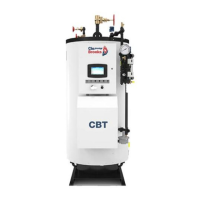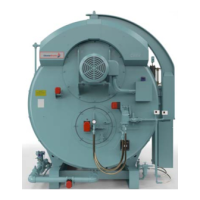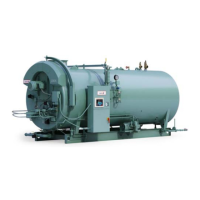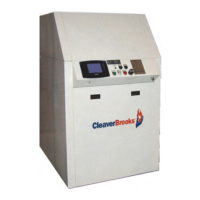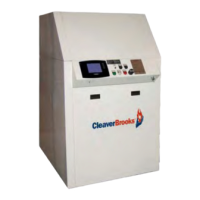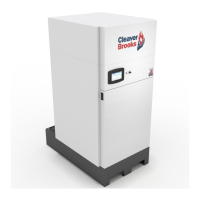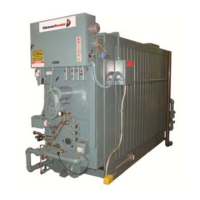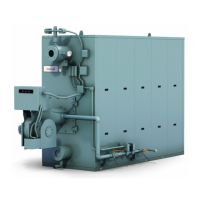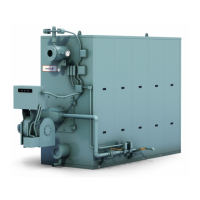750-91 (revised 2009)
Model CB-LE Packaged Boiler Manual
6-19
6.17 — Gas Fuel Combustion Adjustment
The low fire setting should be regarded as tentative until the proper gas pressure for high-fire operation is estab-
lished. To reach high-fire rate:
1. Turn the manual flame control switch toward “OPEN” in minor increments while monitoring combustion for
overly rich or lean conditions.
2. At high-fire the gas butterfly valve should be open as wide as indicated by the slot on the end of the shaft. Set
and lock the high-fire stop screw so that it is just touching the valve arm.
3. Determine the actual gas flow from a meter reading.
4. With the butterfly valve open and with regulated gas pressure set at the calculated pressure, the actual flow rate
should be close to the required input. If corrections are necessary, increase or decrease the gas pressure by
adjusting the gas pressure regulator, following the manufacturer’s directions for regulator adjustment.
When proper gas flow is obtained, take a flue gas reading. The O
2
should be between 3% and 4% at high-fire.
If the fuel input is correct, but the O
2
values do not fall within this range, the air damper travel may need to be
adjusted. Adjustment of the air damper linkage is described in Section 6.2.
With the high-fire air/fuel ratio established, the gas pressure regulator needs no further adjusting.
After being certain that the air control damper and its linkage are correctly adjusted to provide the proper amount
of secondary air, and after adjusting the gas pressure regulator, final adjustment can be made, if necessary, to the gas
modulating cam to obtain a constant air/fuel ratio throughout the entire firing range.
Since the input of combustion air is ordinarily fixed at any given point in the modulating cycle, the flue gas reading
is determined by varying the input of gas fuel at that setting. The adjustment is made to the metering cam by means
of adjusting screws, which are turned outward (counterclockwise from the hex-socket end) to increase the flow of
fuel, and inward (clockwise from the hex-socket end) to decrease it. Flow rate is highest when the cam follower
assembly is closest to the jackshaft.
NOTE: Be sure to loosen the cam foot locking screws before adjusting any cam screws or teh cam feet may be dam-
aged.

